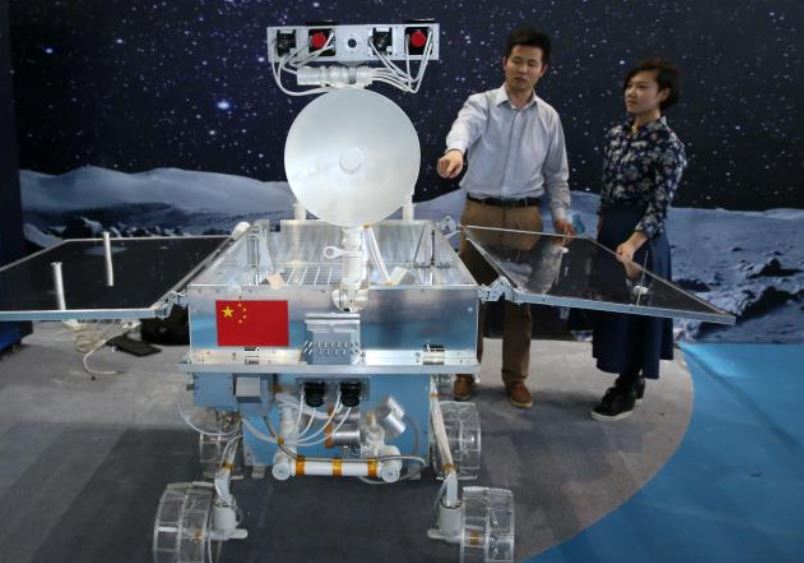
Visitors checking replicas of China’s lunar rover at Beijing Observatory. (Photo: VCG)
On the evening of the Mid-Autumn Festival, families stay up late and get together to enjoy mooncakes and gaze at the moon. Today, thanks to technology, the moon-gazing tradition has gotten an upgrade.
Gazing at the moon has long been an important tradition during the festival, and nowadays, new technologies allow us to have a more comprehensive look at the earth's closest neighbor.
Kou Wen is head of the science and education department at the observatory. He's been giving lectures to the public about the star and the universe.
No wonder he endorses coming to the Moon Hall for the Mid-Autumn Festival.
He shared with CGTN, ”Since ancient times, our ancestors began to notice the patterns of the moon, now known as the moon phases, a result of the ever-changing alignment of the Sun, Moon, and Earth. Here at the observatory, kids and adults can use our state-of-the-art telescope to see the moon in much greater detail and learn fun facts about the moon."
Visitors get to see lunar meteorites and replicas of China's lunar rover, learn about the moon phases, and take photos as astronauts on an exploration mission. Interactive installations like walking on the moon also get the little ones excited.
Kou Wen explained, ”We have legends like Chang'e, but when you use telescope and zoom in to the moon, you'll see that the shadows are the the lunar mare, large, dark, basaltic plains on Earth's Moon, formed by ancient volcanic eruptions. It's that curiosity about the mystery of the moon that keeps scientists going. Earlier this year, China made history with the first-ever soft landing on the far side of the moon, another big leap in moon exploration. So as technology evolves, our understanding of the moon also evolves."
For centuries, Chinese have admired the full moon with family and friends during the festival. And as space exploration continues, perhaps celebrating the holiday on the moon may not be that far away.
One visitor said, ”My daughter has seen documentaries about the stars and she was fascinated, so I've brought her here to experience some more. It'll be great to come for the Mid-Autumn Festival."
From trying to decipher the changing faces of the moon, to stepping on it for the first time, mankind's exploration of the moon has never stopped. In ancient China, people used to think the shadows on the moon were Chang'e, goddess of the moon together with her pet rabbit. Thanks to scientific advancements in astronomy, we now know the real facts about that.


